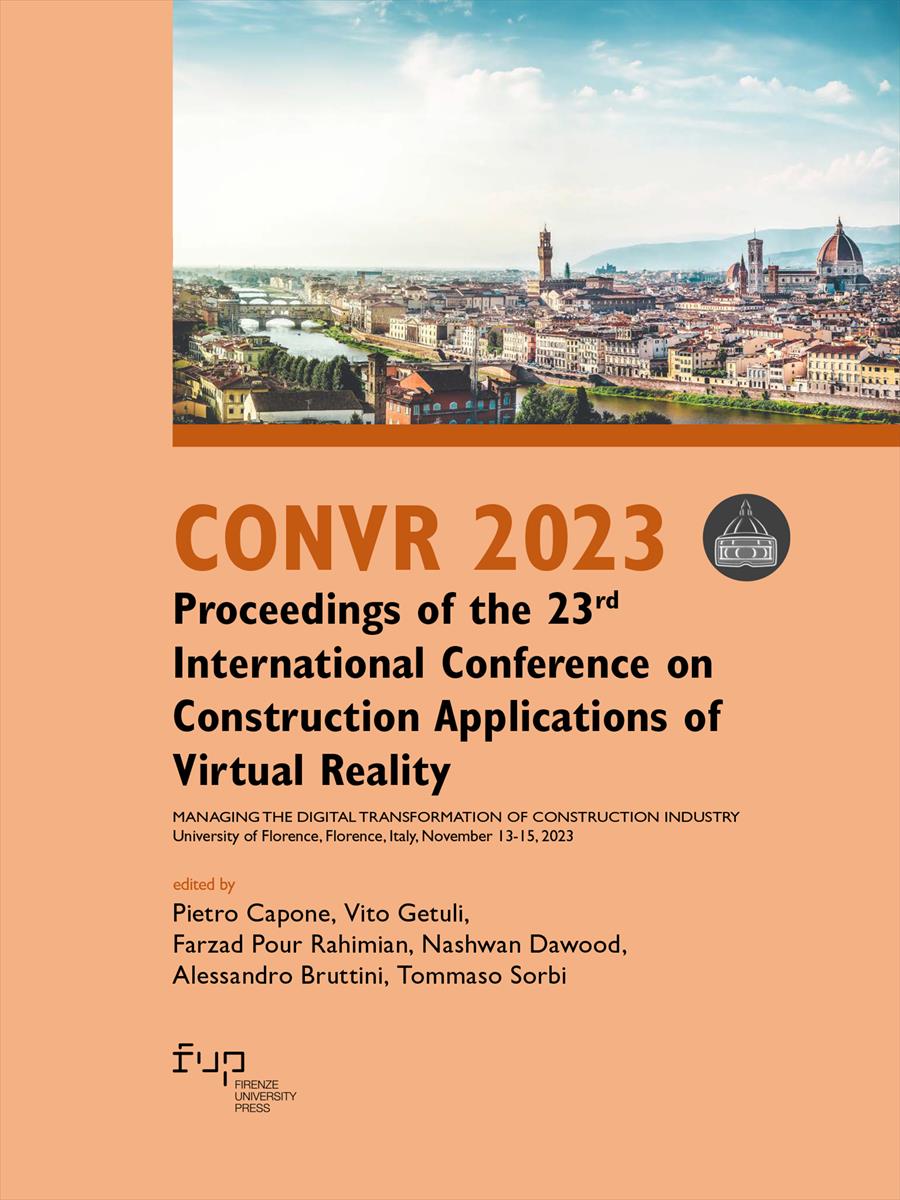- CONVR 2023 - Proceedings of the 23rd International Conference on Construction Applications of Virtual Reality
- Edited by Pietro Capone, Vito Getuli, Farzad Pour Rahimian, Nashwan Dawood, Alessandro Bruttini, Tommaso Sorbi
Early Visualization Approach to the Generative Architectural Simulation Using Light Analysis Images
- Bomin Kim
- Sumin Chae
- Youngjin Yoo
- Jin-Kook Lee
- © 2023 Author(s) |
- CC BY-NC 4.0
- DOI: 10.36253/979-12-215-0289-3.96
This paper presents the potential utility of generative artificial intelligence-based light analysis simulation visualization image in the early phase of architectural planning and design. Facilitating the simulation of a building's performance during the early stages of planning and design presents numerous advantages, such as cost savings and enhanced ease of communication among stakeholders. However, the assessment of design performance is typically conducted during the design development phase or post-design completion. Processing a substantial volume of data based on design alternatives demands considerable time and resources, thus constraining the immediate provision of simulation results. This paper aims to utilize generative AI to produce visualization results of simulations with a predefined level of accuracy, with a specific focus on the architectural aspect rather than the physical and engineering functionalities of the simulation. Consequently, the study employs the following approach: 1) Analyze prominent characteristics and elements within light analysis simulation. 2) Based on this analysis, generate high-quality visualization image data additionally through Building Information Modeling (BIM). 3) Construct a dataset by pairing the generated lighting analysis visualization image with prompts. 4) Utilize the established dataset to create an additional learning model for light analysis visualization images. This study is expected to provide immediate and efficient assistance in design decision-making during the early phases by generating visualization images with high accuracy, reflecting prominent qualitative aspects related to light analysis and processing within the simulation
- Keywords:
- Architectural Design,
- Architectural Visualization,
- Generative AI,
- BIM (building information modeling),
- Fine Tuning Model,
Yonsei University, Korea (the Republic of) - ORCID: 0009-0007-2500-3231
Yonsei University, Korea (the Republic of)
Yonsei University, Korea (the Republic of) - ORCID: 0009-0002-5362-328X
Yonsei University, Korea (the Republic of) - ORCID: 0000-0002-5179-6550
- Atilola, O., Tomko, M., & Linsey, J. S. (2016). The effects of representation on idea generation and design fixation: A study comparing sketches and function trees. Design studies, 42, 110-136, DOI: 10.1016/j.destud.2015.10.005
- Chiu, M. L. (1995). Collaborative design in CAAD studios: shared ideas, resources, and representations. In Proceedings of International Conference on CAAD Future (Vol. 95, pp. 749-759)
- C.M. Eastman, P. Teicholz, R. Sacks, K. Liston, BIM handbook: a guide to building information modeling for owners, managers, designers, engineers, and contractors, John Wiley & Sons, 2008.
- Eastman, C.M. (1999). Building Product Models: Computer Environments, Supporting Design and Construction. (1st ed.). CRC Press: Florida, (Chapter 1), DOI: 10.1201/9781315138671
- Greenberg, D. P. (1974). Computer graphics in architecture. Scientific American, 230(5), 98-107.
- https://openart.ai/
- Kalay, Y. E. (2004). Architecture's New Media: Principles, theories and methods of computer-aided design. Cambridge, Massachusetts: The MIT Press, DOI: 10.1007/s00004-005-0015-1
- Kim, J., Song, J., & Lee, J. K. (2019, January). Approach to auto-recognition of design elements for the intelligent management of interior pictures. In Proceedings of the 24th International Conference on Computer-Aided Architectural Design Research in Asia: Intelligent and Informed, CAADRIA (pp. 785-794).
- Lee, J.K., Lee, S., Kim, Y., & Kim, S. (2023). Augmented virtual reality and 360 spatial visualization for supporting user-engaged design, Journal of Computational Design and Engineering, Volume 10(3), Pages 1047–1059, DOI: 10.1093/jcde/qwad035
- Lee, J. K., Lee, J., Jeong, Y. S., Sheward, H., Sanguinetti, P., Abdelmohsen, S., & Eastman, C. M. (2012). Development of space database for automated building design review systems. Automation in Construction, 24, 203-212, DOI: 10.1016/j.autcon.2012.03.002
- Mackinsey, 2023, https://www.mckinsey.com/capabilities/mckinsey-digital/our-insights/the-economic-potential-of-generative-ai-the-next-productivity-frontier#business-value
- Oppenlaender, J., Visuri, A., Paananen, V., Linder, R., & Silvennoinen, J. (2023). Text-to-Image Generation: Perceptions and Realities, DOI: 10.48550/arXiv.2303.13530
Chapter Information
Chapter Title
Early Visualization Approach to the Generative Architectural Simulation Using Light Analysis Images
Authors
Bomin Kim, Sumin Chae, Youngjin Yoo, Jin-Kook Lee
DOI
10.36253/979-12-215-0289-3.96
Peer Reviewed
Publication Year
2023
Copyright Information
© 2023 Author(s)
Content License
Metadata License
Bibliographic Information
Book Title
CONVR 2023 - Proceedings of the 23rd International Conference on Construction Applications of Virtual Reality
Book Subtitle
Managing the Digital Transformation of Construction Industry
Editors
Pietro Capone, Vito Getuli, Farzad Pour Rahimian, Nashwan Dawood, Alessandro Bruttini, Tommaso Sorbi
Peer Reviewed
Publication Year
2023
Copyright Information
© 2023 Author(s)
Content License
Metadata License
Publisher Name
Firenze University Press
DOI
10.36253/979-12-215-0289-3
eISBN (pdf)
979-12-215-0289-3
eISBN (xml)
979-12-215-0257-2
Series Title
Proceedings e report
Series ISSN
2704-601X
Series E-ISSN
2704-5846
